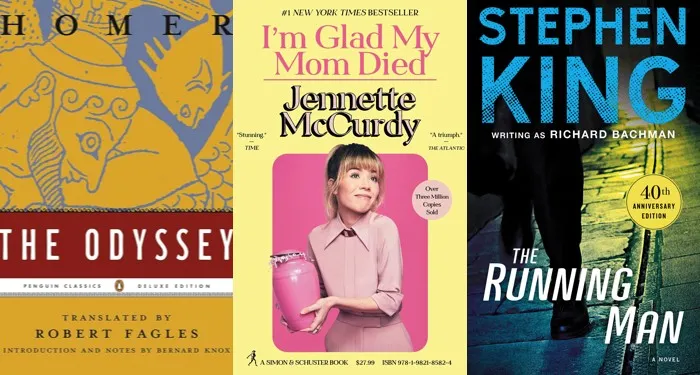In Sheila Heti’s novel How Should a Person Be? (2010), the narrator, a writer from Toronto also named Sheila, recalls once looking “for fifteen minutes at a tiny painting of a single stalk of asparagus” at the Musée d’Orsay: “It was the most moving thing I had ever seen, painted so tenderly and with such a loose hand that it hardly seemed like it had been any work at all.” It turns out to be by Édouard Manet, “one of my favorite painters.” The painting was an impromptu gift: a collector paid more than had been agreed for a still life of a bundle of asparagus, so Manet painted an extra spear for him. (“There was one missing from your bunch.”) The painting appears again in Heti’s novel Pure Colour (2022). Mira, a student at the “American Academy of American Critics,” is shown a slide of it in class. Her professor disparages it: “Art must dress up…. But Manet’s paintings are naked, bare.” Yet Mira feels “an exquisite quivering in her chest, as though something had entered it and was expiring there.”
Manet’s asparagus could be said to embody an artistic ideal for Heti, at least since her turn to autofiction, or what might be called literary nudity, with How Should a Person Be? The painting exemplifies, with its lone subject (“a single stalk”) and unguarded, spontaneous feel (“a loose hand”), a kind of exposure: pure, bold, natural. Heti’s early work was not as exposed. Her first book, The Middle Stories (2001), written when she was in her early twenties, is a collection of brief, zany fairy tales with titles like “The Princess and the Plumber” and “The Man with the Hat.” Her second, Ticknor (2005), is an experiment in historical fiction in the form of a strange and somewhat opaque monologue delivered by a hapless character based on George Ticknor, the nineteenth-century biographer of his more successful friend, the historian William Hickling Prescott. There are hints of Heti’s mature style, including a fondness for incantatory repetition (“When my father died he left me nothing. My father loved me, but when he died, he gave me nothing”), a tic that seems to owe something to Gertrude Stein. But neither book has the engrossing intimacy and sense of necessity that distinguish her more recent work.
It was in How Should a Person Be? that Heti perfected her blunt, hip voice and broached the daringly factual material that brought her a wide audience. Originally subtitled A Novel from Life, the book is the record of Sheila’s quest for a vérité approach to writing (at one point she buys a tape recorder) that could encompass the excitements of her life. These include her conversations with her painter friend Margaux, which Sheila finds far more stimulating than the conventional play she is struggling to finish. “Most people live their entire lives with their clothes on,” Sheila observes at one point, but some people—writers of autofiction among them—are incorrigible nudists:
They are the ones who live their lives not just as people but as examples of people. They are destined to expose every part of themselves, so the rest of us can know what it means to be a human.
There is as much self-abasement as showing off involved in this artistic destiny, Heti suggests—a form of performance art that is almost sacrificial (“so the rest of us can know…”) and whose exhibitionism is oddly impersonal: “My life is just an example of a life,” Heti once said in an interview. “I’m never trying to tell anyone about me. I’m just trying to understand what a life is.”
Her next novel, Motherhood (2018)—arguably her best, certainly her weightiest—is a gripping account of the Heti-like narrator’s obsessive ruminations as she, then in her late thirties, tries to determine whether she wants to have children (“the greatest secret I keep from myself”). Running through Motherhood is a dialogue: Heti poses questions to a trio of coins, which she tosses to produce a yes or no, her version of the I Ching method. The resulting exchange is improbably scintillating. Heti’s inventive prompts bring the coins to life, converting the random succession of heads and tails into answers that seem to possess the authoritative wisdom—the artificial intelligence—of an oracle:
Should I try to sense more things?
no
Should I try to sense what I do sense, more consciously?
yes
What does that mean? With more discernment?
no
Sometimes characterized as philosophical, Heti’s books tend to be driven by questions more than plot. They are spiritual-existential quests, though this doesn’t mean they are always serious. They are distinguished by a mixture of earnestness and impishness, moving depth and arch shallowness: in the prologue to How Should a Person Be?, Sheila both announces her concern with how to “build your soul”—perhaps the watchword of Heti’s oeuvre—and confesses her hope for “a life of undying fame” in “an age of some really great blow-job artists.”
Alongside the blow jobs and ugly painting competitions in How Should a Person Be? is the story of Sheila’s painful divorce and the advent of her important friendship with Margaux; among the flipping coins and visiting mystics in Motherhood are the tensions and pleasures of her bond with her partner, Miles, and her complicated feelings about her own mother. Pure Colour, Heti’s oddest novel—an extended sequence takes place inside a leaf—has the feel of a quirky, sometimes slightly mawkish fairy tale, but it is also a piercing, emotionally precise account of the death of Mira’s father and unrequited love.
Mira’s professor at the American Academy of American Critics is showing the class what he describes as Manet’s “vague, rushed, crude” asparagus as evidence of the painter’s mediocre technique: “He has an eye but no hand.” Heti’s critics have discussed her own work in not dissimilar terms. Even positive reviews tend to deprecate her handling of language or at least suggest that it is of secondary interest. For James Wood, How Should a Person Be? is a “messy book” whose style “one might charitably call basic: simple, direct, sometimes ungainly.” For Joanna Biggs, it’s clear that “Heti is going for ideas rather than fine prose, for invention rather than craft.” Motherhood, meanwhile, strikes Christine Smallwood as “shapeless,” composed of “journally passages…which vary considerably in sagacity and interest.” Dwight Garner—though enthusiastic about the book—agrees that Heti prizes “voice over style” and “deals out her ideas in no-nonsense form, as if she were pulling espresso shots.”
It is true that Heti’s prose is radically accessible: she uses plain words in straightforward sentences. She administers information in extremely manageable doses. How Should a Person Be? opens: “We were having brunch together. It was Sunday. I got there first, then Misha and Margaux arrived, then Sholem and his boyfriend, Jon.” It would be difficult to set a scene more simply. But is there not something slyly dramatic and bracing about the way those staccato sentences plunge us in? Heti’s prose is more distinctive and charismatic than her critics acknowledge. Its rhythms and repetitions give her writing an unusual atmosphere—mystical and tender, with comedy usually hovering in the background, as in a children’s book:
Mira left home. Then she got a job at a lamp store. The lamp store sold Tiffany lamps, and other lamps made of coloured glass. Each lamp was extremely expensive. The least expensive one cost four hundred dollars. This was a month’s salary for her…. She had to pull the cords with a gentle sort of care. It was tedious work.
Note the mixture of sympathy (“a month’s salary for her,” “a gentle sort of care”) and twinkling amusement (the droll repetition of “lamps” and “lamp store”). Or consider the precision of her first impressions of Margaux in How Should a Person Be?:
She had bleached blond hair and dark, obvious roots. Her voice was deep. She had the pitiless eyes of a cartoon character and a genuine nonchalance in her being, and she was dressed in a strange outfit: heavy boots, tall white socks over black leggings, and a pink corduroy jacket with white fluffy clouds. She looked at the same time like a little girl, a sexy woman, and a man.
If Heti’s prose is “raw,” as Wood put it—it certainly doesn’t feel overworked or labored—it is also deliberate, every word calibrated, and some modestly striking: “obvious roots,” “nonchalance in her being.” (Asked about her approach to editing, Heti said, “If I don’t like rereading it, I’ll get rid of it.”)
Heti’s prose can also be stranger and more theatrical than her reputation for plainness would suggest. Take the prologue to How Should a Person Be?:
I admired all the great personalities down through time, like Andy Warhol and Oscar Wilde. They seemed to be so perfectly themselves in every way. I didn’t think, Those are great souls, but I did think, Those are some great personalities for our age…. I know that inside the body there’s just temperature. So how do you build your soul?
These sentences may be simple, but they are not predictable. Who exactly is speaking them? What kind of narrator—from which “age”—would express themselves with that blend of solemn archaism and modish colloquialism? (“Those are some great personalities.”) Or consider the way Heti opens Motherhood with a kind of Olympian grandeur—“I often beheld the world at a great distance, or I didn’t behold it at all”—and then lowers the tone: “When I entered the living room in the morning, half a hot dog was on the table.” Heti’s voice is unstable, slightly scrambled: ancient and contemporary, exalted and a bit dumb, geist and zeitgeist.
“Part of our appreciation of art is in our sense that the artist has taken pains,” Diane Johnson argued in her review of How Should a Person Be? in these pages, but “the idea here is to frustrate that pleasure.”* Yet is there not an equal pleasure to be had in the sense—the painstakingly achieved illusion—that pains were not taken? The magic of Manet’s asparagus, in Sheila’s view, is that “it hardly seemed like it had been any work at all.” The simplicity of Heti’s prose effaces much of its craft in a similar way, and this illusion of effortlessness is a major source of its pleasure: it makes us feel as though we could capture the world as easily—paint an asparagus with as much carefree beauty, dash off sentences with as much casual command.
Nowhere does Heti make it look easier—nowhere is her prose more deceptively ordinary—than in her most recent book, Alphabetical Diaries. To make the book (“write” seems like the wrong verb), Heti copied a decade’s worth of her diary entries into a spreadsheet, sorted the sentences alphabetically, and cut most of them. The result is a slick volume of non sequiturs: “I will get my toe fixed. I will handle a scandal coolly”; “It seemed glamorous, sordid, honest and okay. It seems crazy to pay for stuffed cabbage”; “I knew a big love would come about in the spring of my thirty-second year. I knew when I was young that all that mattered for art was conviction. I know this cannot be interesting to read.”
Alphabetical Diaries is interesting to read, if also less propulsive than Heti’s previous books. It is essentially a list of sentences. The letters of the alphabet form chapters of a kind, some with protagonists (the “L” section, for example, contains the sentences beginning with “Lars,” one of several vexed love interests), but the sentence is the book’s principal unit. Since these sentences are discontinuous, each one is peculiarly exposed, thrown into relief by being extracted from its native context.
Some are sentence fragments (“A desire to do acting”; “About decadence and narcissism”). Many are concerned with prescribing—or proscribing—behavior. Along with banal reminders—“Don’t spend so much money. Don’t spend so much time on Twitter”—there are loftier injunctions: “Don’t be covetous. Don’t be fatalistic. Don’t be frivolous. Don’t be miserable.” Aphorisms are pervasive too, a hallmark of Heti’s style, which is plainly influenced by self-help literature: “Curiosity is not a good reason to get married”; “A budget will help you know where to go.” Heti wrings amusing effects from alphabetical contingency: “About humans in general. About leaving town. About to sell it soon, I think.” She excels at descending from the existential to the trivial: “Am I wasting my time? Am low on money. Am making noodles”; “Grow my brain and my knowledge. Grow out bangs. Grow up.”
But the interest of Alphabetical Diaries is not just a matter of arresting juxtapositions. Discussing “what you need to know in art” with Margaux in How Should a Person Be?, Sheila concludes that “you have to know where the funny is,” and Heti emphatically does: “Meanwhile I am trying to have one ugly video of me from Sydney taken down from the internet”; “I did not remember that I asked to see his penis, which apparently really upset him.” Some sentences are bizarre (“Knocked out my tooth this morning and can’t find my gold coin”; “There was emailing in the afternoon in tents”). Their opacity invites attention to form. And then there is Heti’s singular variety of quirky philosophizing, somewhere between obvious and luminous: “A human must be responded to by a human”; “I suppose as a mathematician attends to math, a writer has to attend to the human drama.”
One of the less conspicuous tactics she uses to make her sentences distinctive is the conjunction “and”: “I was lying on the floor and I called him over and he got down on the floor with me and I was stroking his arm.” “And” refuses to specify the connection between each clause, meaning that Heti’s sentences flatten and spread out, acquire a deadpan poise, or sound a little starry-eyed. The voice of the child is rarely far away: “Nobody knows why marriages happen”; “All the really great things that have been created in art have been created by adults.” Heti also channels the voice of the child through repetition: “That night we dressed for dinner, and there was dinner”; “There was salt on my lips, and when I licked them, they tasted salty.”
What’s remarkable is that none of this feels affected or self-regarding. Just as Sheila can’t say why she is so moved by Manet’s paintings (the “something in his hand or his soul—or elsewhere”), it can be difficult to explain why Heti is a convincing writer. (As Heti herself complains in Alphabetical Diaries, “I am trying to learn from the Helen DeWitt book, but what is there to learn except that it works?”) For Heti, conviction is all that matters in art, and maybe she pulls off even her cheesiest adages—“Money always comes; it comes when you are true”—not because we believe the inanity, or even believe that Heti really believes it, but because we believe that she felt that way when she wrote it down, or perhaps we simply enjoy the sound of her confident, faintly humorous lyricism.
Similarly even her most fatuous repetitions (“Pavel is at a concert with his brother tonight, so I think he will not call because he is at the concert”) ring true because such repetitions are themselves repeated, a recurring rhythm: “I went to the Tate Britain and looked at the Turners, which I didn’t like at first, but then I found that when I went to the other areas of the museum, I missed the Turners.” What might look silly in isolation works as part of the whole.
What is Alphabetical Diaries about? Men, certainly (plus at least one woman): as in Heti’s other work, there’s a fair amount of bluntly recounted sex, as though to certify her commitment to self-exposure (“We had a bubble bath, then Vig went down on me and we fucked”). Yet despite being drawn from her diaries, the book is not really about Heti. Though it may appear to be her most autobiographical work—constructed from the rawest material—it is in many ways her least. The alphabetical form encrypts and abstracts such that the book is more of a meta-diary than a diary. Alphabetical Diaries crystallizes the paradox of the artist as nudist: those who “expose every part of themselves” become almost generic exhibits. The book feels intimate without being entirely personal; its most tremulously naked sentences—“I think I’m sad”—are also its least particular.
Beyond any of its themes—romance, writing, money—the larger subject of the book is how narrow and recurring Heti’s concerns are. But Alphabetical Diaries is also a spectacle of flux and inconsistency, of changes of heart (feeling affection for a lover, then finding that “he irritates me on a very deep level”) and reversals of perspective (“How tiresome it is getting older”; “Thank God my youth is ending”). It can function a bit like a mirror; Heti’s pledges and outbursts, epiphanies and schemes remind us how much of our own inner lives is spent plotting to live differently and better, blaming ourselves for failing to, coming to the same realizations, or contradictory ones.
Throughout Heti is at the mercy of feelings. In fact you could say the book is in part about the hegemony of mood:
I am foul-minded today…. I am in a rage and a jealous rage right now. I am in a really bad mood, really self-pitying…. I am sad. I am scared…. I am so happy I’m going to be seeing him in New York. I am so happy the book is done. I am so happy today. I am so sick of myself and all my thoughts, circles, fears, and worries. I am so tired I want to die…. I feel a little better. I feel excited! I feel flushed…. I feel like crying. I feel so much fear and reticence and apology and stress…. I woke up feeling bad as usual.
The book is a dramatic testament to the punishing, often senseless volatility of our emotions, of going “from such happiness one day, to feeling such revulsion for oneself the next, from one day feeling joy, to there being no possibility of it at all the next,” Heti writes. (“Our moods do not believe in each other,” as Emerson put it.)
Alphabetical Diaries is also about time. Sometimes it is reversed: “Grandma died. Grandma has been sick. Grandma is ailing still.” Sometimes it is accelerated: “I am still young, twenty-eight…. I am thirty-one, after all. I am thirty-two.” Despite the scrambling of chronology, there is a powerful sense of duration—an evocation, perhaps, of what Heti in Motherhood called “the soul of time.” There is even a feeling of progress, all the regression and repetition notwithstanding. Or rather regression and repetition, the book suggests, are what progress is mostly composed of.
Sometimes this progress is “my moral progress in the world”; sometimes it is advancement of a less noble variety. The narrator is not only a dedicated artist but also an ambitious one (“I am tired of always pushing myself, pushing myself”), which is not quite the same thing. “Art is too much a tool for ambition, and not even the ambition to make something beautiful—which, as I write it, seems exhausting, too—but just the personal ambition to rise above other people,” Heti writes early on, elsewhere berating herself for her “ugly hollow aspiration.” What, Heti sometimes seems to be wondering, is her devotion to her work a devotion to? It’s not always easy to disentangle the impulse to communicate something beautifully from the craving for acclaim, to distinguish self-exposure from self-display. An “example of a person,” we might note, is an equivocal term: it can mean a representative anybody, but also someone set above the rest, exemplary. (“You are not an example to anyone,” Heti scolds herself at one point.)
Heti is tempted by the glamour of the world beyond Toronto (“Don’t worry about LA. Don’t worry about New York”). “If I want to write, I have to move away from, not towards, the dazzle,” she tells herself: toward simplicity but also away from the lure of stardom. Maybe that’s why, except for its inclusion of e-mails, Heti’s fiction feels blissfully offline. Reading Motherhood is a bit like dwelling in a cave; Pure Colour is set sometime “before everyone knew what everyone else wanted.” The Internet, with its clamorous publicity and frazzling abundance, is a kind of symbol of all that must be warded off for Heti’s art to remain true to itself.
Like all autobiographical literature, Alphabetical Diaries is an act of self-fashioning. Heti has admitted that she anonymized her friends and conflated them into composites. She kept the real names, however, of a few prominent acquaintances (Adam Phillips, Edmund White). This name-dropping is often self-deprecating (Edmund White calls her “Shelly”), but these literary notables do stand out, especially next to the deliberately unusual pseudonyms of Heti’s lovers and friends (Pavel, Lars, Vig, Lemons). They risk contaminating the book’s intimate world with gossip. They are also reminders that Heti’s life is not entirely average, not quite any old “example of a life.”
The earliest sentences in Alphabetical Diaries date to 2005, and many were written in Heti’s late twenties and early thirties, before her career took off. (She started messing around with the entries the week after How Should a Person Be? was published.) She can be found quaintly observing that she is “not ambitious to be published in The New Yorker,” where several of her short stories have since appeared. Certain sentences no longer hold: “People need personalities to go with the books, but nobody knows who I am, so no personality can go with the books.” Christian Lorentzen has written that autofiction’s “gestures toward the real…blur the line in the reader’s mind between an author and a character.” The effect of that blurring is not just that the character seems real but that the author seems increasingly unreal—special, bathed in the glow of a kind of stardom.
Couldn’t we all produce such a book? With Alphabetical Diaries’ cadences echoing around my head, ordinary conversation would sometimes sound full of funny, profound sentences worth writing down (“Her chief delight is sniffing”; “You don’t see so many ants as an adult”). The book seduces us into thinking that our own thoughts and feelings would, if cannily edited, be as interesting to read. And perhaps they would! Raising this possibility is, in any case, part of the power of Heti’s plainspoken self-exposure. In How Should a Person Be? a friend of Sheila’s worries “that she would never be good enough at anything” because she had squandered “her twenties going to parties and sleeping with men.” “So what if you haven’t been drawing comics since the age of two,” Sheila says to reassure her. “Who cares? I’m convinced that everybody has been doing something since the age of two.” It’s a consoling thought: that our lives are not wasted on us, that we need only pay attention to what we’ve been up to and we’ll discover our natural masteries and authentic curiosities.
Yet could anyone get their jumbled journal published? Otherwise put: Is our enjoyment of Alphabetical Diaries entirely literary? Even if Heti’s skill accounts for the book’s success—the convincing rhythms of her sentences, judiciously spliced together so as not to bore or baffle—its existence surely depends to some extent on Heti’s fame. The diaries are interesting to read in part simply because they are Heti’s.
Some of the entries made me curious, even a touch suspicious, about the kind of diary Heti was keeping. “Figure out money transfer” or “File my taxes—important” or “Call Fiona” are the sort of mundane notes to self you’d think wouldn’t be especially useful buried in a journal. A self-described “quitter” who never does anything “that isn’t exciting to me in that moment,” Heti is a writer for whom the process is in many ways the point: her books “lead the reader through an experience,” as she puts it, by being the record of her leading herself through one. In Alphabetical Diaries she vows “to write with the thoroughness of my whole being for the rest of my life.” Nonetheless those oddly practical sentences remind us that the details that seem the most naturalistic and authentic can be the most artificial of all. In literature there are no notes to self that are not also notes to us.
In a prefatory note to Motherhood, Heti claims that “all results from the flipping of coins result from the flipping of actual coins.” There’s no way to know, of course. Conviction is essential to the authority of her kind of art, yet there is no certificate of authenticity except the writing itself. But we’d like to believe Heti. Our pleasure depends on it.



















 English (US) ·
English (US) ·